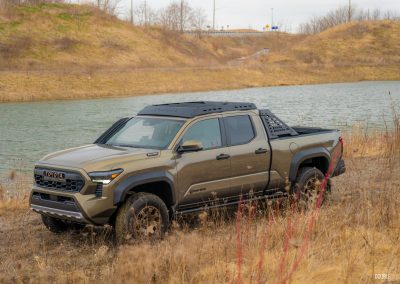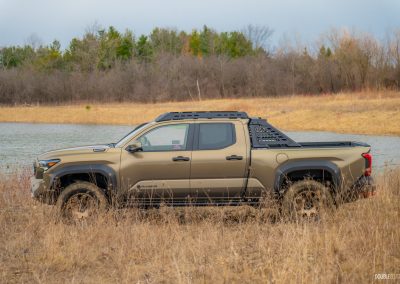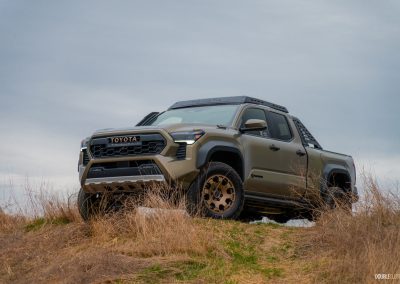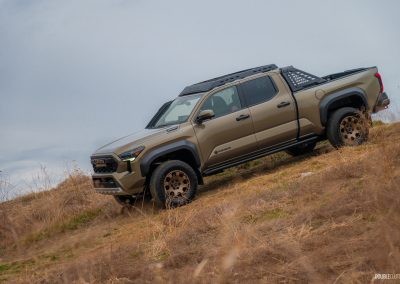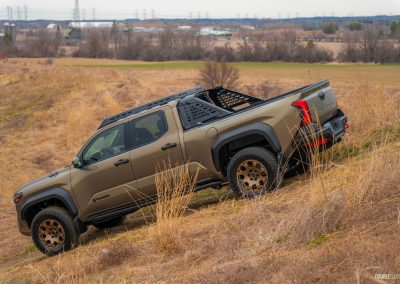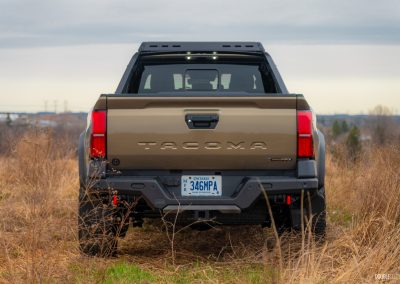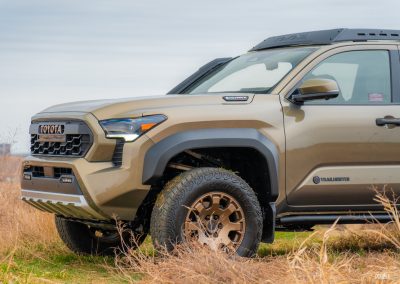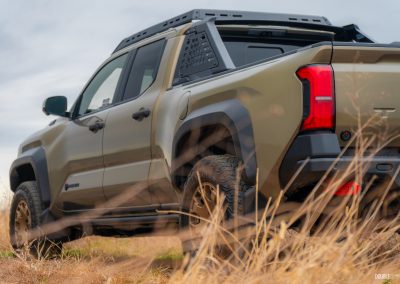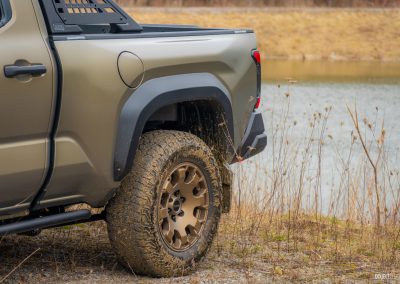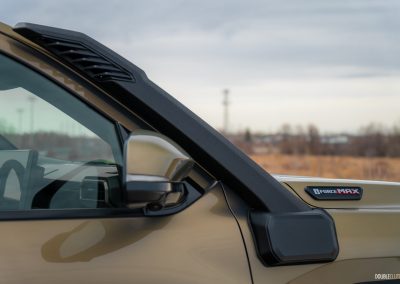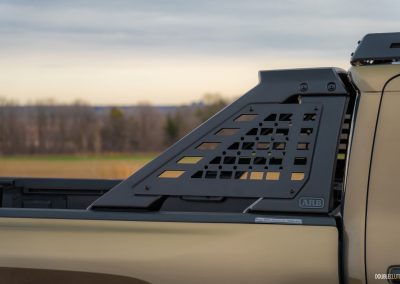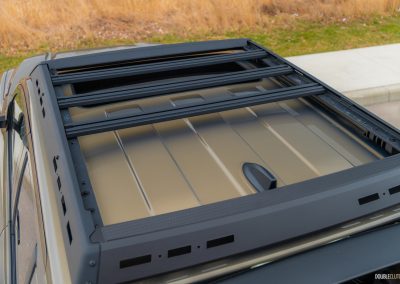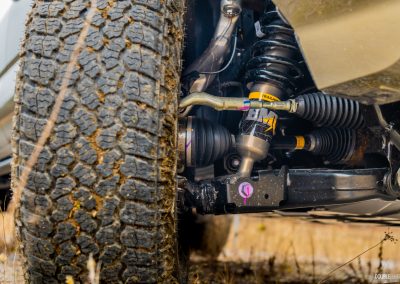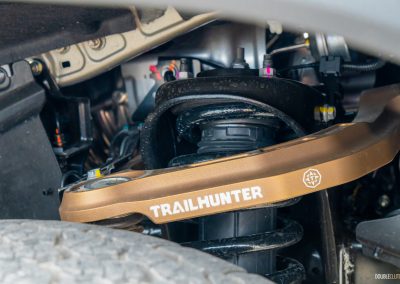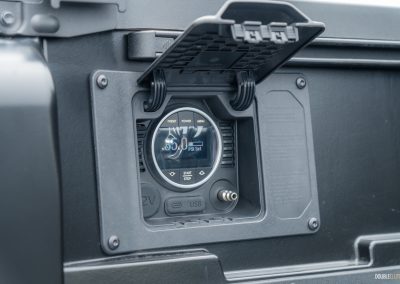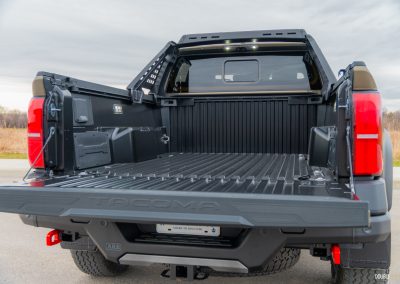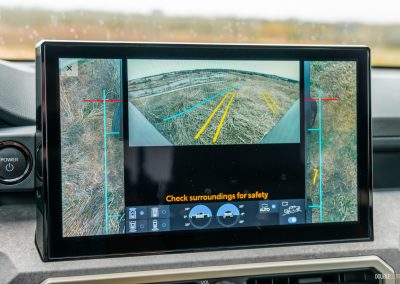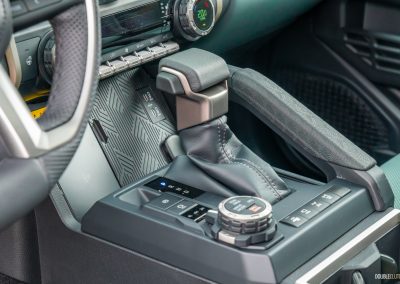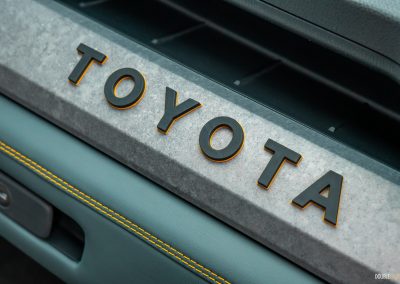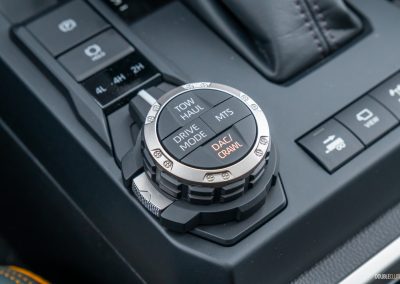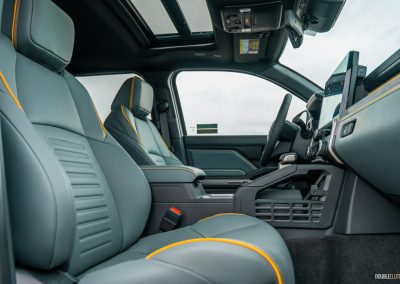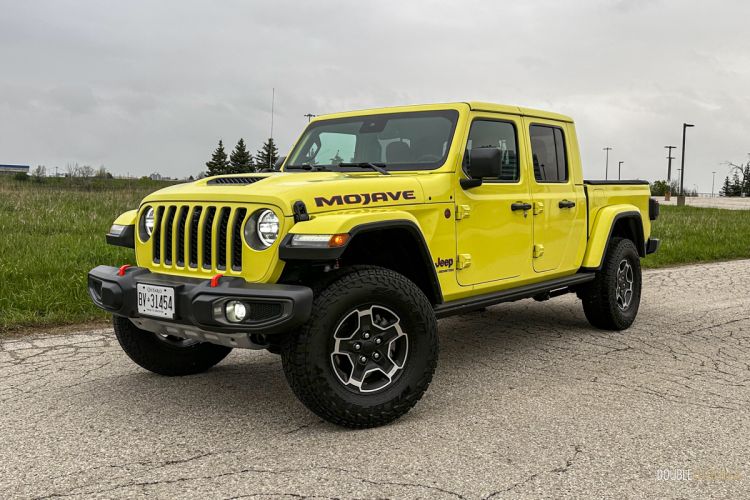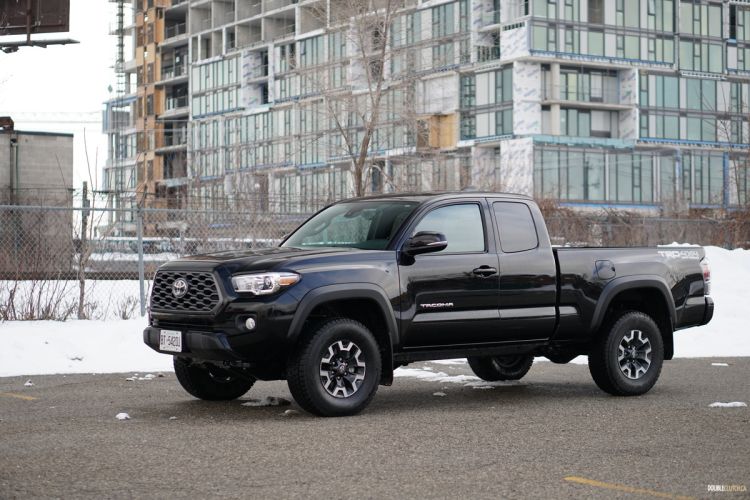With a slew of new mid-size pickup trucks comes a new slew of purpose built off-road variants. Chevrolet and GMC have the respective Colorado ZR2 Bison and Canyon AT4X AEV siblings, Ford has extended the Raptor name to its impressive new Ranger, and Toyota’s doubling down on the action, too. Their TRD Pro trucks have always been competent off the beaten path, but they’ve gone even further into the overlanding realm with the new 2024 Toyota Tacoma Trailhunter. Naturally, I bolted out of town to hunt down some trails — as one does.
With the new Tacoma Trailhunter, Toyota has taken a page from GM’s playbook. The hardest-core Canyon and Colorado are adorned with hardware developed in conjunction with established aftermarket providers, if not lifted out of their catalogue directly. Toyota’s done something fairly similar here: the Trailhunter is festooned with ferocious fittings designed in concert with ARB, including but not limited to steel bumpers with recovery hooks for better break-over and departure angles, a bed-mounted sport bar with MOLLE mountings, rock rails, and high-strength steel skid plates to protect its vitals.
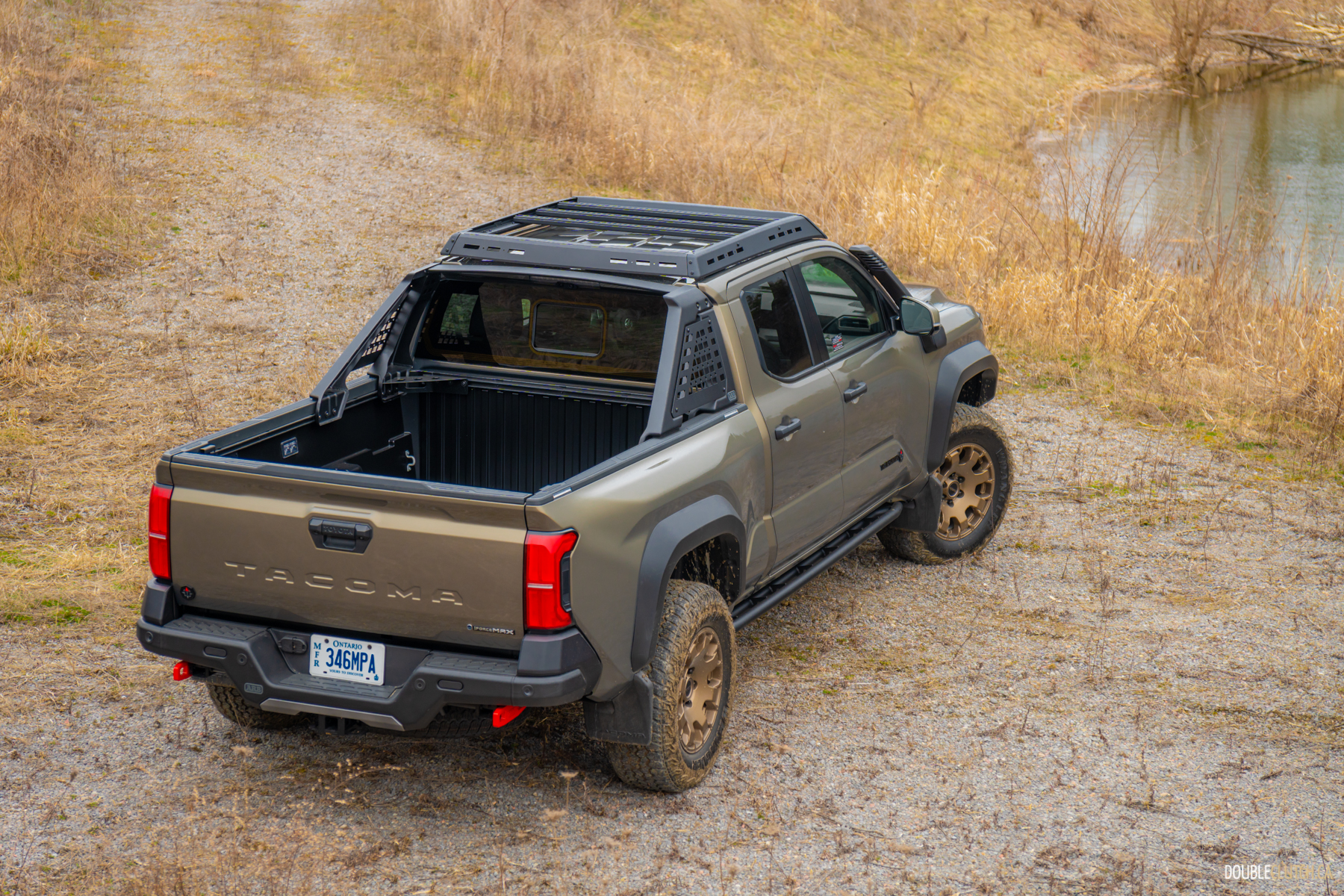
The new hardware isn’t all just armour plating and macho shoulder pads. The Trailhunter features custom suspension components developed with ARB and built by Old Man Emu, the highlight of which being huge 2.5-inch forged 6061 aluminum monotube shocks, with remote reservoirs for the rear pair. They feature “position sensitive damping” which changes the characteristics of the damping force based on where the piston is in the shock body and how fast it’s travelling, giving the flexibility of an electronically adjustable shock without the electronics.
On the topic of electronics, the Tacoma Trailhunter’s similarities to the Colorado ZR2 Bison and Canyon AT4X AEV stop there, as the powertrain in the Trailhunter is augmented by a jolt of electricity. Toyota’s impressive iForce Max hybrid powertrain lives under the hood of the Trailhunter, making this the first time we’re seeing this powertrain in the new Tacoma. This means the turbocharged 2.4-litre four-cylinder engine gets a boost from an electric motor built into the eight-speed automatic transmission. It produces a combined 326 horsepower, which is nothing to sneeze at, and a hearty 465 pound-feet of torque available from 1,700 rpm.

Toyota’s Hybrid Max powertrains aren’t all about fuel efficiency like the Prius. Like our time with the Tundra TRD Pro, hybridization here is more so to maximize performance. This powertrain has almost double the torque of the V6 it replaced, while also reducing fuel use, if only slightly. If I kept my foot out of it, I saw a combined fuel use of 12.3 L/100 km, which is pretty good for a purpose-built rig on knobby 33s, but you have to concentrate to do it. This will be difficult, as the Trailhunter is fitted with a snorkel for the intake system that also happens to act as a megaphone for the turbocharger. With the passenger window cracked, the turbo whistle is shockingly loud, complete with the chooo-ch-ch-ch badass wastegate sounds you’d expect from Brian’s Supra in Fast & Furious. I can’t believe this noise comes from a factory truck. It’s awesome.
All Trailhunters are as fully loaded as a Tacoma can be, with a 14-inch infotainment touchscreen, heads-up display, and a JBL sound system, plus heated, ventilated, and power adjustable seats dressed in leatherette accented with bronze stitching. The dash is capped with what looks like a stone veneer to complete the tough-as-nails motif, and big T-O-Y-O-T-A lettering on the passenger side of the dash further sets things apart. It’s a utilitarian space that makes use of lots of large buttons and knobs for essential operations, and everything looks and feels like it’ll stand the test of time, with no delicate gloss-black finishes to be marred by muddy hands.
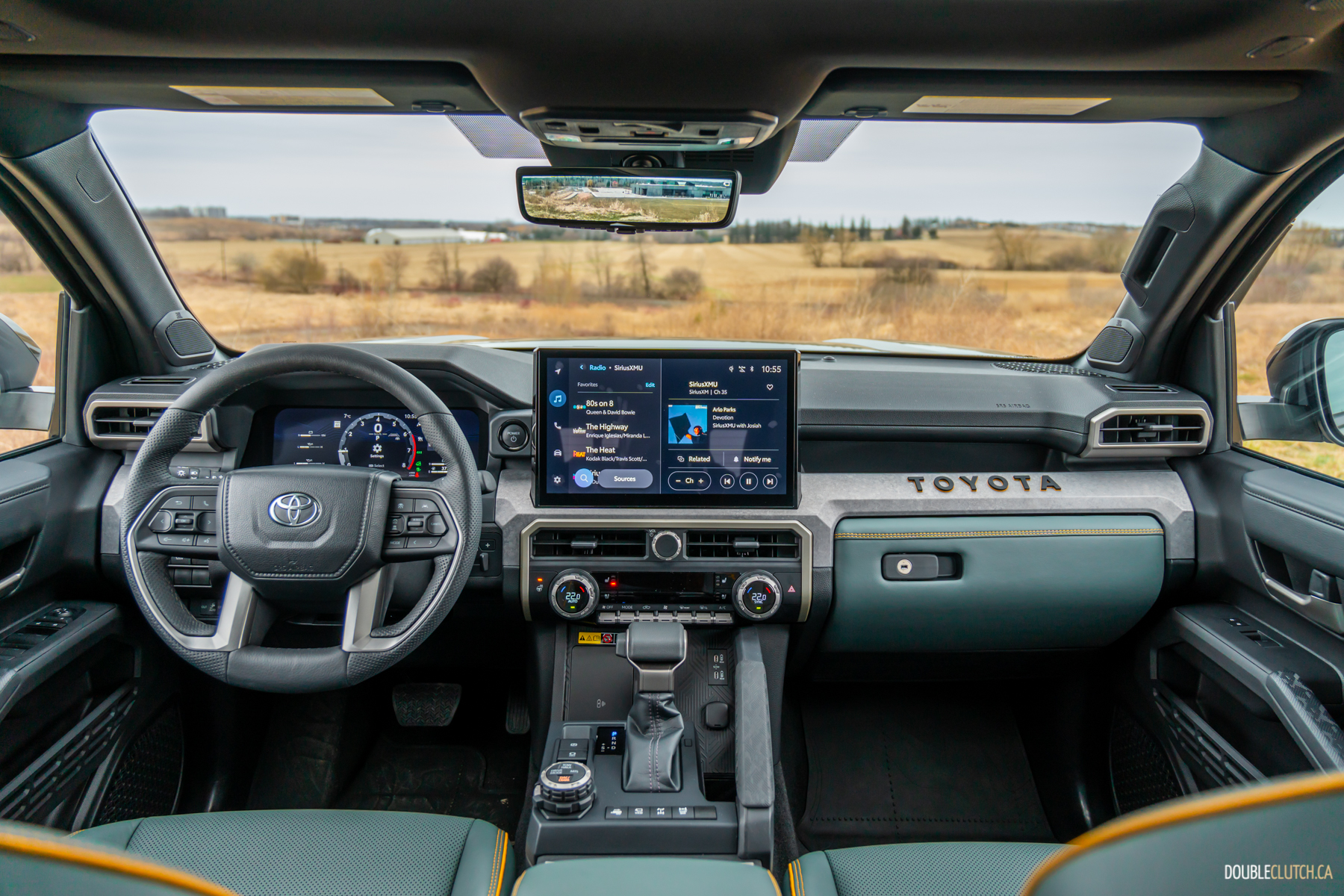
While the Trailhunter is dressed with every almost luxe accommodation Toyota has, it does not translate to a luxurious driving experience, although that’s not necessarily a bad thing. First, it makes all the noises: the aforementioned turbo whoosh and brawny exhaust note are cool, but there’s also a huge amount of noise from wind washing over the roof basket and road noise from the Goodyear Wrangler all-terrain tires, which is less cool but to expected. The rack in the back has chunky metallic rattle, too, and the jury’s still out on whether this looks military-carrier-cool or city-bus-lame.
The Old Man Emu shocks are, in a word, firm. As you’d hope from such a stiff setup, the battle-hardened body of the little Taco is incredibly well-controlled with no float, not much in the way of squatting or diving, and hardly any body roll. It communicates clearly through the chassis and steering wheel what it wants to do, but the only real drawback is, on a largely smooth road, that firmness tends to rear its head in slightly unpleasant ways. Sharp ruts or expansion joints on any otherwise smooth surface transfer a jolt through the cabin, as if it’s steamrolling the road, flattening the world one sharp thud at a time.
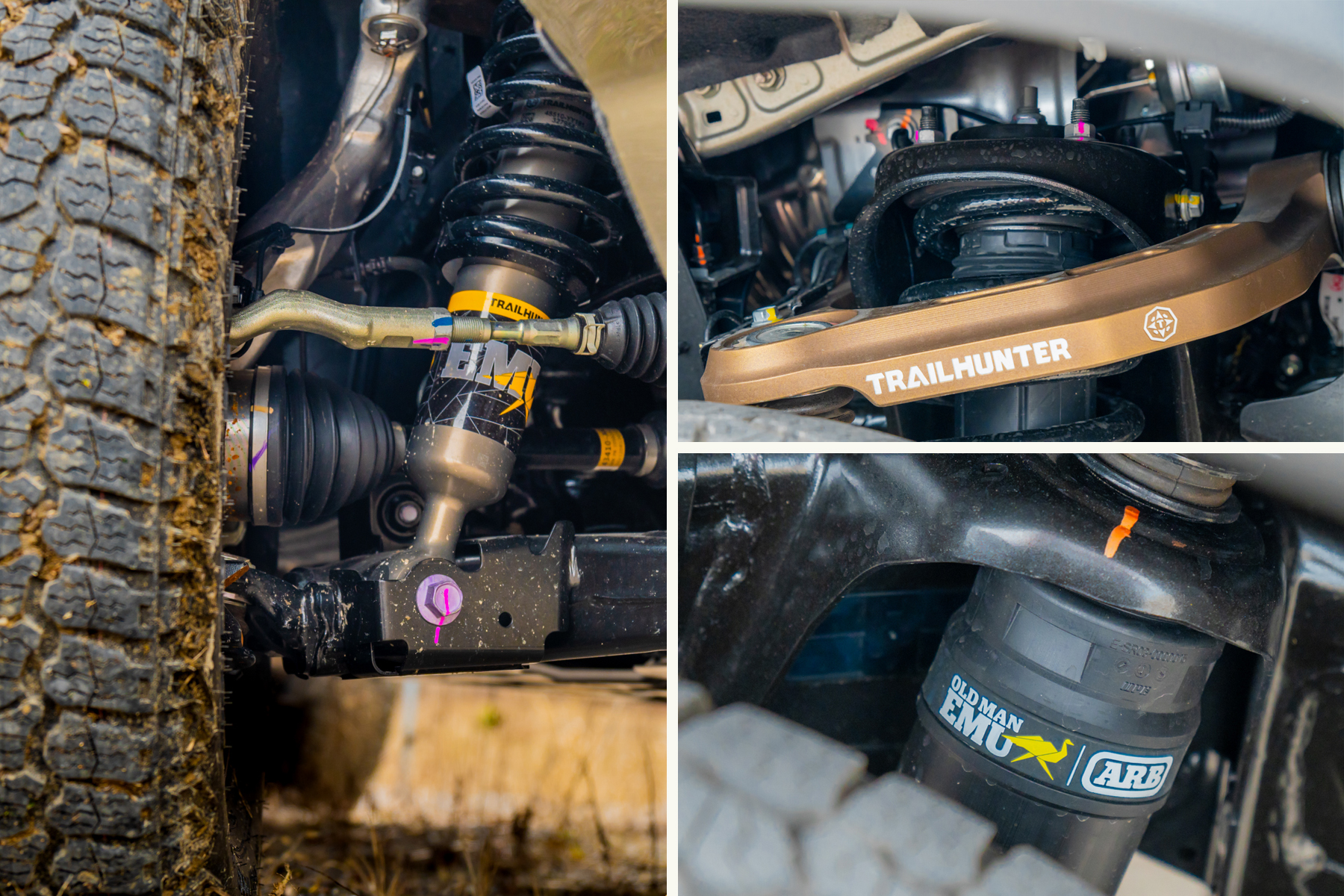
However, there are two major redeeming caveats to this. First, despite sharing a platform with the Tundra, the Lexus LX 600, and other big Toyotas that sometimes struggle to control chassis shudders, the Taco (or at least this particular Taco variant) is largely free of this affliction, so the occasional jarring jounce isn’t nearly as punishing as it could be. Second, while the factory-custom suspension doesn’t always make the most sense on smooth pavement, it makes all the sense in the world as the road gets rougher. Even when flying down gravel or seriously broken roads, it shrugs it all off, maintaining composure and control while still steamrolling the road.
The Trailhunter is decked with a deluge of tools to help it go almost anywhere, including an electronic locking rear differential, 3D trail cameras — that not only effectively make the hood disappear, but are also cleverly positioned to help you place the wheels exactly where you need them — and when the going gets real tough, a stabilizer disconnect system for those extra few degrees of articulation. I wish I had more time to more thoroughly test what the Trailhunter is capable of, but it handled the obstacles I threw at it like they were … well, not obstacles. Steep inclines, thick mud, deep ruts? The Tacoma Trailhunter doesn’t care. Toyota’s smart terrain modes and traction control, which I’d usually loathe in this application, worked well to make short work of anything I could find to throw at it.
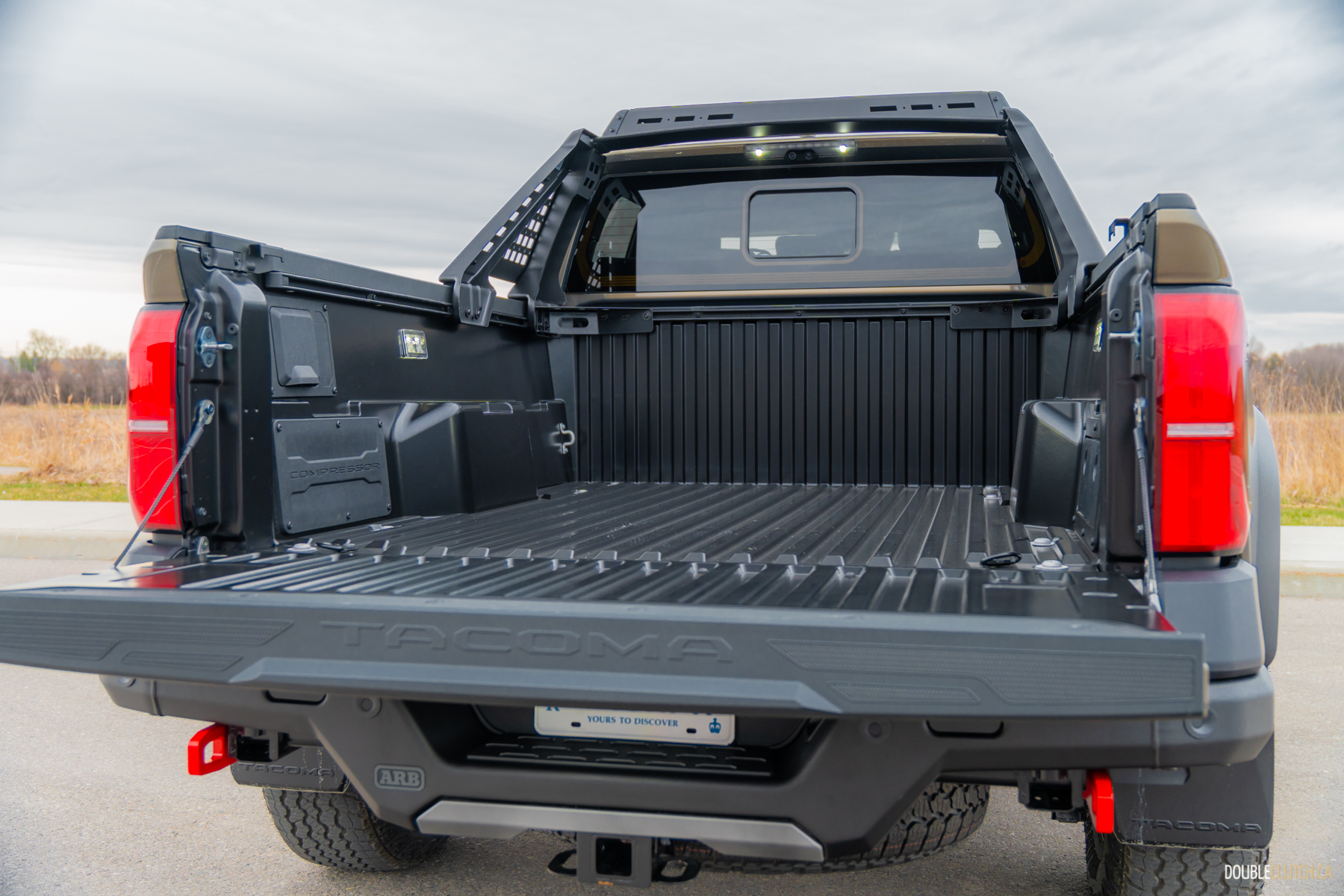
The Tacoma Trailhunter only comes in a crew cab configuration, and curiously, only with a six-foot bed, giving it a slight edge in utility over its rivals and their 5.5-foot beds. The only place it doesn’t have much of an edge is pricing, at $82,995 as-tested. the Tacoma Trailhunter is right in line with the Colorado ZR2 Bison and Canyon AT4X AEV, and about four grand under Ford’s new Ranger Raptor — although admittedly, that extra four grand buys you a lot of bespoke engineering in the Ranger.
But for those looking for an overlanding rock-crawling machine with the implied indestructibility that comes with the Toyota name, the added over-the-top toughness from top shelf custom hardware, all fresh off the showroom floor with a factory warranty, the 2024 Toyota Tacoma Trailhunter is a hell of a rig.

